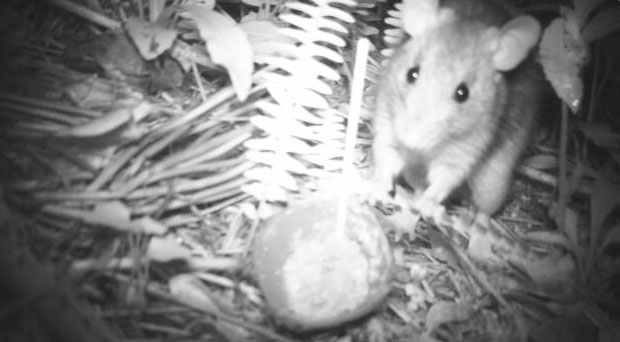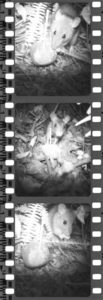
The key to good eavesdropping is not getting caught
Animals leave scent marks everywhere. They’re thought to be used for communication, but they can also be an important source of information for eavesdropping animals (unintended receivers), such as predators and prey. So how do eavesdropping animals use this information to decide if the scent of a predator is worth avoiding or if the smell of food is worth following? By the age of the scent!
Age matters
Fresh scent marks give off different odors to older scent marks and these differences in odor can be distinguished by animals and interpreted to help them make decisions about foraging and anti-predator strategies. The fresher the scent mark, the closer the animal that created it is likely to be. Similarly, as scent marks age, they are less likely to represent the presence of the creator.
I smell a rat
Rats are exceptional animals that can learn and remember many different odors. In the wild however, like most animals, they are confronted with the problem of how to eat without being eaten.
Our study examined how rats use the age of odors to make foraging decisions and avoid predators.
Risk vs. reward
Rats displayed antipredator behavior when presented with fresh predator odor. This is presumably because predator odor represents a high probability of predator encounter and a higher perceived predation risk. But the rats did not respond to old predator odor. It is very beneficial to be on high alert when predator odor is fresh so that you can run and hide to avoid being eaten. However, this takes an enormous amount of time and energy. Thus when the odor is old and the predator is unlikely to be close by, a larger part of that energy could be better spent finding food and mates.

In contrast, both fresh and aged prey odors were of interest to and investigated by rats. Even though there is a lower chance of finding prey when the odors are old compared to fresh, predators pay little costs in investigating these odors, and so are likely to inspect them on the off-chance that they might lead to a meal.
Who gives a rats?
The ecological significance of odor age should be considered when interpreting animal responses to olfactory information. This is important because animal responses to predator odors are often used as a proxy for determining whether prey recognize a predator as a threat. If they do not respond to the odor, prey are often assumed to be naïve to that predation threat. But these animals may be performing a sophisticated response whereby they do not react to the predator odor because it has aged and the predator is unlikely to be close by. This can be dangerous given that such studies often inform where conservation effort and predator control (both very costly exercises) are required.
Read full journal article: Risk vs. reward: how predators and prey respond to aging olfactory cues
Jenna Bytheway
Latest posts by Jenna Bytheway (see all)
- Follow your nose - 18th August 2016